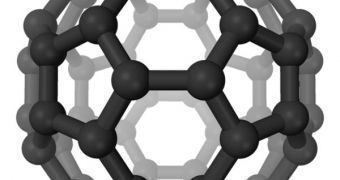Over the past few years, carbon molecules called buckyballs have been detected throughout the Universe, in dying stars, nearby galaxy, in the space separating galactic clusters, and so on. Now, experts propose that these molecules are what brought the seeds of life here on Earth.
Thus far, scientists have widely believed that the carbon spheres only tended to form in hydrogen-poor environments in space, but the new study demonstrated that this is not always true. Signs of buckyballs were also found in common, hydrogen-rich environments.
This suggests that the molecules are more widespread in the Universe than first anticipated. As such, it stands to reason that they may have carried the seeds of life here on our planet. At this point, not taking into account this possibility would be limiting.
“It turns out that buckyballs are much more common and abundant in the universe than initially thought,” explains Letizia Stanghellini, who is an astronomer at the Tucson, Arizona-based National Optical Astronomy Observatory (NOAO).
“Spitzer had recently found them in one specific location, but now we see them in other environments. This has implications for the chemistry of life. It's possible that buckyballs from outer space provided seeds for life on Earth,” she goes on to say.
The NASA Spitzer Space Telescope is extremely well qualified to search for buckyballs, due to its sensitive infrared detectors. The instrument is responsible for finding some of the earliest traces of the carbon compound in the Universe, in July 2010.
Buckyballs are created when dust grains, especially hydrogenated amorphous carbon grains, are struck by intense ultraviolet radiations from young, blue stars. Another method is via gas collisions.
“Buckyballs are sort of like diamonds with holes in the middle. They are incredibly stable molecules that are hard to destroy, and they could carry other interesting molecules inside them,” Stanghellini says, quoted by Daily Galaxy.
“We hope to learn more about the important role they likely play in the death and birth of stars and planets, and maybe even life itself,” she goes on to say.
At this point, buckyballs are studied around the world. Their amazing properties make them suited for drug-delivery applications in medicine, for creating new armors, drugs and optical devices, and for setting the foundation for advanced superconducting materials.

 14 DAY TRIAL //
14 DAY TRIAL //